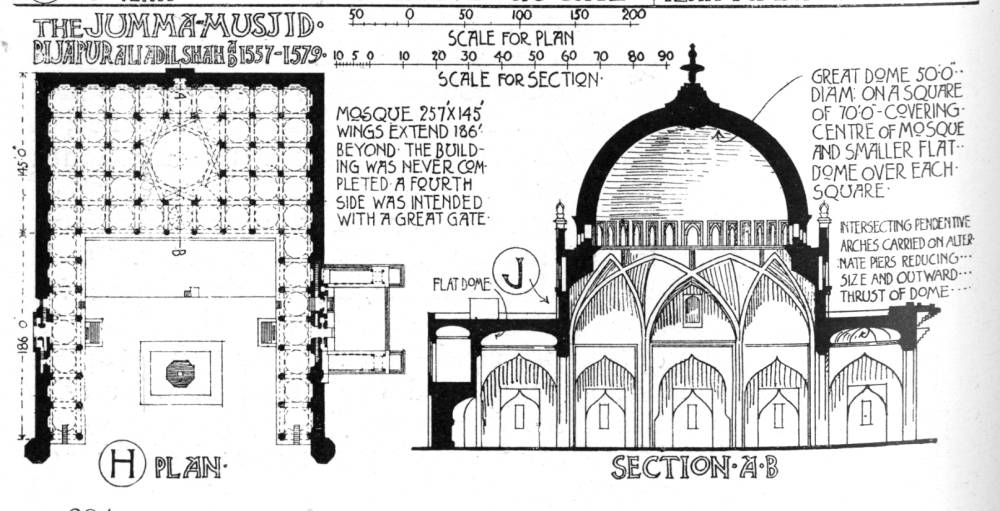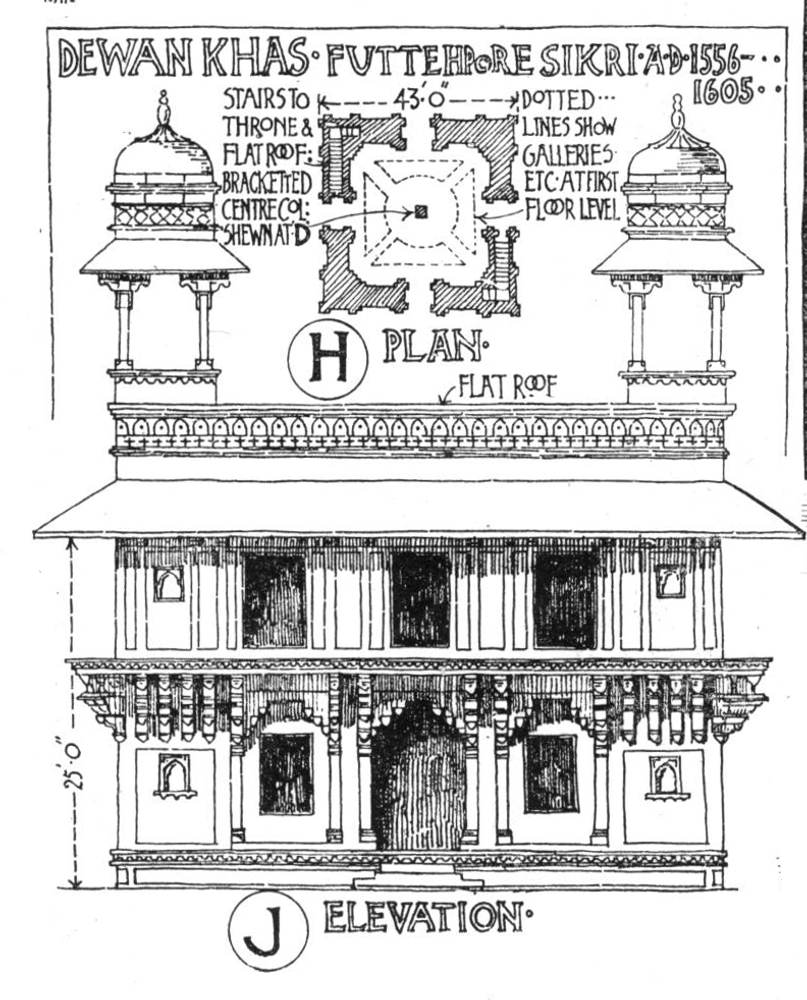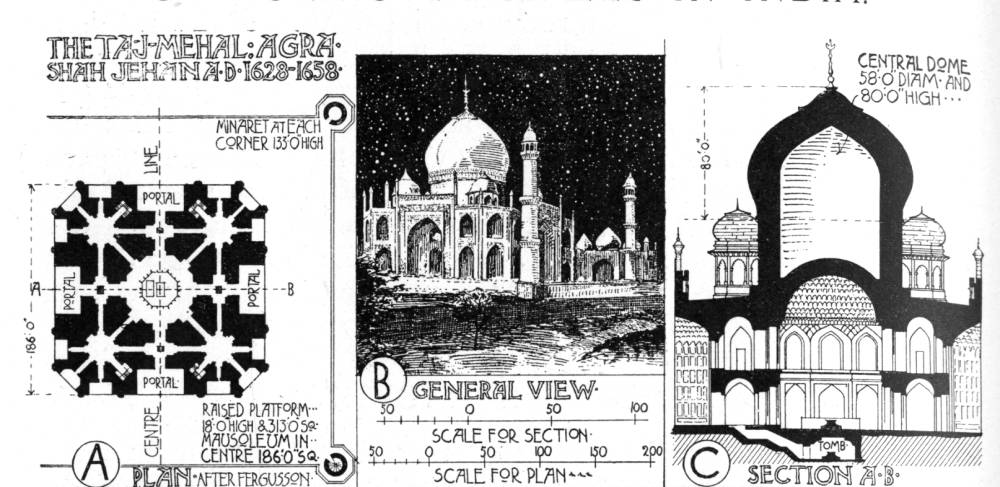The architecture of all previous periods was eclipsed by the architecture of the Mogul dynasty (a.d. 1526- 1761). Some of the principal examples are tombs, and were erected at Agra, the capital. These were mostly octagonal, erected on a garden platform, and laid out with ornamental foun- tains, the angles and entrances being accentuated by domed pavilions. Such tombs were, during the lifetime of the founder, used as festal halls.

Mosque of Futtehpore-Sikri. “Western Gateway, showing typical treatment of half-domed Entrance with recessed doorway.” Fletcher, plate 295 (p. 673). Click on image to enlarge it.
At Futtehpore-Sikhri, King Akbar (1556-1605) erected a group of important buildings, one of which is the Mosque (No. 294 d,e). This is a three-domed structure, 290 feet by 80 feet, occupying one side of an open court, the whole inclosure measuring 550 feet by 470 feet, and containing two royal tombs.

Left: . Right: . [Click on images to enlarge them.]
The southern and western gateways are specially noteworthy (Nos. 294e and 295) as being of a style which prevailed throughout the period, and which may be contrasted with the Greek, Roman and Gothic styles in the treatment of entrance gateways. In the example (No. 295) the doorway is placed at the back of a recessed opening which is crowned by a semi-dome. By this means the openings led up to the high inclosing arch of the outer wall by an easy gradation, giving all the size and dignity required for a noble portal without disturbing the aesthetic qualities of scale.

In the courtyard of this mosque is the marble Tomb of Selim Chistee (No. 294 d, f, g), with broad spreading eaves and elaborately carved bracket capitals (Nos. 296 and 298 f), of which there is a cast in the Indian Museum, South Kensington. The windows have pierced tracery of geometric pattern, a characteristic Saracenic treatment (No. 296).

The celebrated Dewan-Kas, or private audience hall, of which a plan and elevation are given (No. 298 h,j), has inlay work of precious stones on its walls.



Shah Jehan (1628-1658), grandson of Akbar, erected at New Delhi a palace of great size, of which only portions remain. It occupied a space of 1,600 feet by 3,200 feet, and had immense portal, entrance hall, courtyards, bazaars, audience and music halls, baths and gardens, besides accommodation for distinguished guests and court attendants.

The Taj-Mehal, Agra. Click on image to enlarge it.
The Taj-Mehal, Agra (No. 294 a, b, c), was also erected by Shah Jehan. It forms a part of one of the most famous groups of architectural monuments in the world. It is a royal mausoleum of white marble placed in the centre of a raised platform 18 feet high and 313 feet square, each angle being marked by a minaret 133 feet high. In plan it is symmetrical, being a square of 186 feet, with the angles taken off. It has a central dome, 80 feet high (No. 294 c) and 58 feet in diameter, crowned by an outer dome of the same height (No. 297).

Around the central dome are two-storied aisles, each angle being pro- vided with a small dome supported on pillars. The entrances are in the centre of each face and are of the usual recessed type, crowned with a four-centred arch set in a square frame. The light to the interior is introduced through two pierced marble screens in the upper story, producing a dim and subdued effect on the interior. The Taj is specially famous for its inlay of precious stones — jasper, bloodstone and agate, in ornamental scrolls and fretwork — which impart a rich effect to the fabric. In its setting of cypress trees, marble fountains, lakes and terraces (No. 297), the Taj produces an enchanting effect, which has been remarked by all travellers.

Moti Musjid, the Pearl Mosque. Click on image to enlarge it.
Shah Jehan also erected other notable buildings, including the Muti Musjid, or Pearl Mosque, Agra. It is built of white marble, and is a three-domed mosque, placed on one side of a court, about 150 feet square.
The Jumma Musjid, Delhi, has a similar type of plan. It is built of red sandstone and white marble, and is peculiar in being designed only for external effect, but seldom sought for in mosques. After Shah Jehan, few buildings of importance were erected, but a decline set in, due in part to the introduction of European modes and the influence of Classic revivalism.
Bibliography
Fletcher, Banister, and Banister F. Fletcher. A History of Architecture on the Comparative Method for the Student, Craftsman, and Amateur. 5th ed. London: B. T. Batsford, 1905.
Last modified 13 December 2018